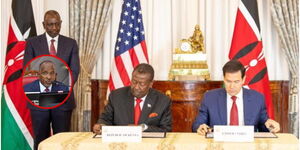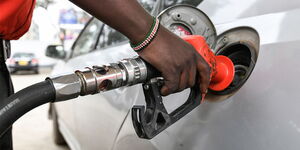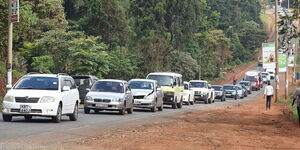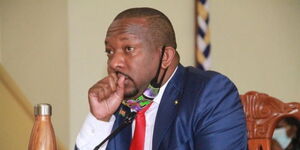For as long as gold has been considered a valuable metal, there have been counterfeiters trying to exploit it, to con and scam their way to an easy fortune.
Nothing wipes out your investment like discovering that your gold is not as legitimate as you thought it was and that the trader who sold it to you didn’t have your best interests at heart after all.
That's why as an investor, it’s important to know exactly what you’re paying for.
In the recent past, there has been a notable increase in the number of reported cases of fraud involving gold dealings and/or exports in the country.
Kenya is currently not a major producer of gold with only one large mine operational in Narok as well as numerous artisanal miners.
Most of the gold that is traded informally in Kenya is reportedly from the Democratic Republic of Congo.
As at now, South Africa is reportedly ranked the highest gold producer in Africa, followed by Ghana, Tanzania, Mali, Burkina Faso, Zimbabwe, Guinea, Ethiopia and Cote d’Ivoire among others.
This article will look at ways that you can test your gold to determine if it is real, and also how to avoid getting into fraudulent dealings.
How to Spot fake Gold
According to GoldBroker.com most pieces of real gold, including coins, bars, and jewelry, should have a stamp that shows the purity of the gold.
You may need a magnifying glass to see this, but you should be looking for a mark that displays either the fineness of the product (such as “.999”) or the number of karats that it contains (such as “24k”).
However, do not assume that just because your piece has these marks it is genuine. Many counterfeiters will add them to fakes to make them appear more genuine.
More so, if it has the following marks, then it is not real gold.( 1-20,1/20, 1-100,1/100, GP, GF, EP, Gold filled).
You should also look for discoloration.
This may be hard to spot in a piece that is brand new, but if it is old, if it has experienced a significant amount of wear, then you should be able to see noticeable discoloration.
This is especially true with jewelry, in which case you should look near the clasp, which will have been handled more. If discoloration does appear, then your item may only be gold plated.
Also, many fake gold chains are actually real gold on the lobster claw, but the rest of the chain is fake. Having the stamp on both the lobster claw and the link is more assuring.
The color of the gold itself may also be an indicator, although you need to remember that some gold coins, including the Gold Sovereign and the Gold Krugerrand, are not 100% pure. They both have copper added to them, which gives them a unique reddish hue.
How to test fake gold
One of the fallacies surrounding gold is that it is so soft you can bite it and leave an indent. This is why Olympians jokingly bite their gold medals.
The truth is that people did use to bite gold in order to test it, but only because lead was commonly used to counterfeit gold and lead is even softer than gold. So, they were hoping the metal would not indent, and not the other way around.
Also, these days Olympic gold medals contain at least 92.5 per cent silver and only a fractional amount of gold, so they might be disappointed to learn that their medal is (technically) fake after all.
Biting aside, there are other ways that you can test to determine whether what you have is real gold or not:
1. Magnet Test
Gold is not magnetic, so you can use a magnet to determine whether what you have is actually a cheap base metal.
This is not an all-encompassing test, as it may consist of another non-magnetic metal, but it certainly helps to narrow down the field.
2. Scratch Test
For this test, you need a non-glazed ceramic plate, and the goal is to drag your coin/bar across the plate, scratching the surface.
If the scratch is black or grey, it’s not real gold. If the scratch is gold, then it is genuine. Bear in mind that this technique may damage your gold.
3. Acid Test
For a bit of etymological history, the term “acid test” actually comes from gold testing.
This test involves nitric acid and can be dangerous to you and damaging to your piece, so it is often best left to an expert.
4. Density
Gold is a very dense metal, and the purer it is, the denser it is. Therefore, you can run a density test to determine whether what you have is real or not.
5. Expert
You can also send your gold to an expert. They will check and grade it for you.
However, these gradings are not cheap, and they are therefore not viable if you’re fairly sure that what you have is fake, or if the piece is small, common and otherwise inexpensive.
How to avoid fraudulent gold dealings
1. In order to protect unsuspecting citizens and foreigners, the Ministry of Mining advises members of the public to contact them for verification of:
a) Persons claiming to be mineral dealers
b) Mineral dealers licences
c) Mineral export permit
d) Assay reports, (The the assay contents are usually altered to show huge quantities of gold to have been tested and grade(s) verified).
e) Laboratory reports
f) Any other documents alleged to have been issued by the ministry.
The ministry further advices that you should be wary of the following scenarios:
a) A person passing with huge quantities of gold available at discounted prices.
b) Traders selling gold allegedly coming from neighbouring countries or gold allegedly stored in custom’s warehouses or in transit.
c) Demands of hefty upfront payments running into millions of shillings to facilitate the processing of export documentation with relevant authorities.
d) Promotion of gold refining services within Nairobi's upmarket estates as bait where perpetrators showcase their gold stock and from which tiny samples of genuine gold are extracted for laboratory tests.
Contacts
In case of need for further information or clarification, please contact the Ministry of Mining through the following contacts:
Tel: +254 (020) 2723101
Fax: +254 (020) 2714398
Email: info@mining.go.ke
P.O. Box 30009, 00100, Nairobi, Kenya
Works Building, Ngong Road
Nairobi, Kenya
Sources: Ministry of Mining, CNBC, Goldbroker, Detect a Fake.












